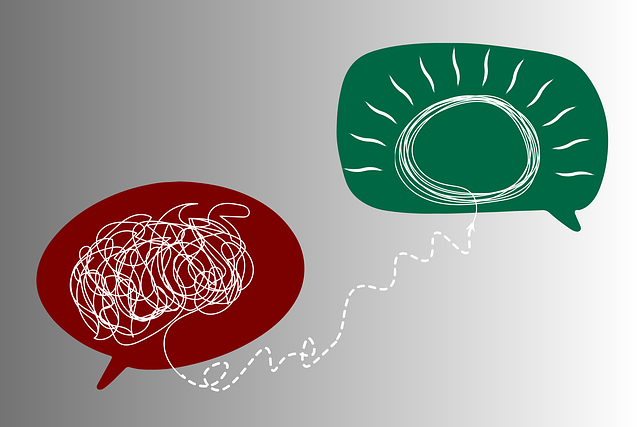Lone Tree Mindfulness Therapy leads public awareness campaigns crucial for educating communities about mental health issues, dispelling misconceptions, and encouraging open conversations. These initiatives leverage diverse media platforms to reach wide audiences, empowering individuals to seek Trauma Support Services or explore emotional regulation techniques. Through strategic planning, tailored messaging, and visually appealing content, they promote emotional well-being and influence legislative changes for accessible, quality mental health care. Evaluating campaign effectiveness through data-driven methods ensures their positive impact on community mental wellness.
Public awareness campaigns play a vital role in shaping societal attitudes and behaviors, acting as catalysts for positive change. This article explores the intricate process of developing impactful campaigns that resonate with audiences. We delve into strategic planning, creative design, and measurement techniques to ensure effectiveness. From understanding the target audience to crafting compelling narratives, learn how to engage and inspire action. Discover best practices, including success stories from organizations like Lone Tree Mindfulness Therapy, to create campaigns that leave a lasting impact and foster meaningful transformation.
- Understanding Public Awareness Campaigns: Their Role and Impact
- Planning and Strategy: Creating an Effective Campaign Framework
- Design and Content Creation for Maximum Engagement
- Measuring Success and Iteration: Evaluating Campaign Outcomes
Understanding Public Awareness Campaigns: Their Role and Impact

Public awareness campaigns play a pivotal role in educating communities about various issues, including mental health. These initiatives, often driven by organizations like Lone Tree Mindfulness Therapy, aim to dispel misconceptions, encourage open conversations, and promote proactive measures towards emotional well-being. By leveraging diverse media platforms, these campaigns can reach a wide audience, fostering an environment where individuals feel empowered to seek Trauma Support Services or explore strategies for emotional regulation.
In the context of Mental Health Policy Analysis and Advocacy, awareness campaigns are instrumental in shaping public perception and influencing legislative changes. They highlight the importance of mental health as a societal concern, advocating for policies that ensure access to quality care and support. Such initiatives have the potential to revolutionize the way communities address emotional challenges, fostering a more inclusive and supportive environment for all.
Planning and Strategy: Creating an Effective Campaign Framework

A successful public awareness campaign starts with meticulous planning and strategy. It’s about understanding your target audience, their needs, and the societal context in which the message will be received. At Lone Tree Mindfulness Therapy, we’ve seen firsthand how a well-structured framework can amplify the impact of initiatives aimed at promoting emotional regulation and resilience building.
This involves defining clear objectives, tailoring messages to resonate with diverse audiences, and selecting appropriate channels for dissemination. Incorporating these elements into your campaign strategy not only enhances its reach but also ensures it aligns with the core themes of mental wellness—a key aspect we explore through our popular Mental Wellness Podcast Series Production.
Design and Content Creation for Maximum Engagement

The design and content creation aspects of public awareness campaigns are pivotal to achieving maximum engagement and impact. Visuals play a significant role in capturing attention; a well-designed poster, social media graphic, or video can instantly convey messages about mental wellness and encourage self-care practices. Incorporating subtle elements from Lone Tree Mindfulness Therapy’s brand, such as their signature colours or logo, helps in brand recognition while aligning the campaign with their mind over matter principles.
Effective content goes beyond aesthetics; it tells compelling stories and uses relatable language. This strategy fosters a deeper connection with the audience, making them more receptive to the campaign’s message. By addressing common challenges related to mental health and offering practical self-care tips, campaigns can empower individuals to take control of their well-being. Such approaches ensure that the campaign resonates with participants, leaving a lasting impression and encouraging positive changes in their lives.
Measuring Success and Iteration: Evaluating Campaign Outcomes

Evaluating the success of public awareness campaigns is a crucial step in ensuring their effectiveness and impact on community mental wellness. At Lone Tree Mindfulness Therapy, we believe that measuring campaign outcomes provides valuable insights for improvement and adaptation. By employing various assessment tools and gathering feedback from participants, we can gauge the reach and resonance of our messages. This data-driven approach allows us to refine our strategies, ensuring that future campaigns resonate even more deeply with our target audience.
For instance, tracking key metrics such as campaign engagement rates, knowledge gain assessments, and post-campaign mood management surveys helps us understand the emotional well-being promotion techniques employed. These iterations foster a continuous improvement process, enhancing the overall impact of our public health initiatives aimed at promoting mental wellness. Ultimately, this approach enables us to create more impactful and tailored campaigns that cater to the evolving needs of our community.
Public awareness campaigns play a pivotal role in educating and engaging communities, as demonstrated by successful initiatives like Lone Tree Mindfulness Therapy. By combining strategic planning, compelling design, and meaningful content, organizations can create powerful tools for positive change. Through regular evaluation and iteration, each campaign becomes an opportunity to learn and improve, ensuring their long-term impact and relevance. Embracing these steps—from understanding the audience to measuring success—is key to crafting campaigns that resonate and drive real results.














